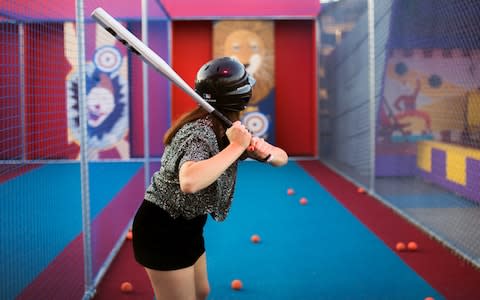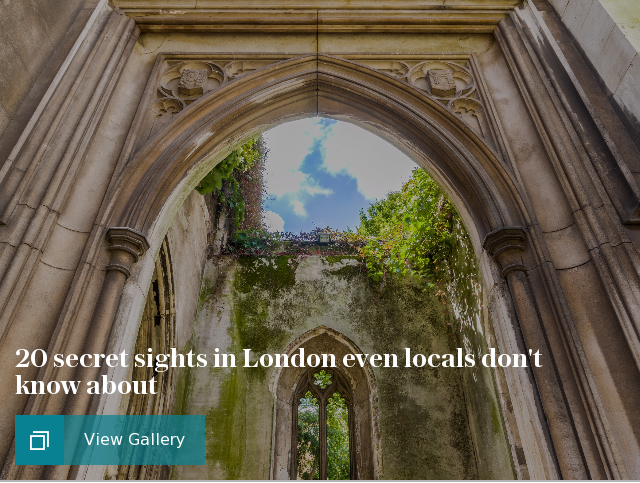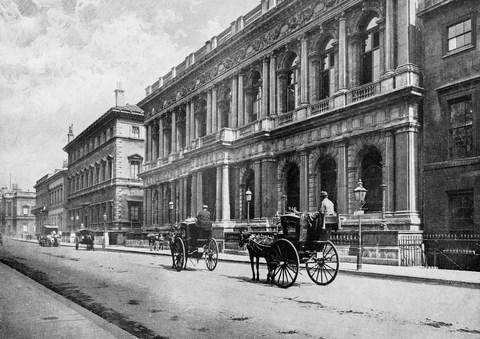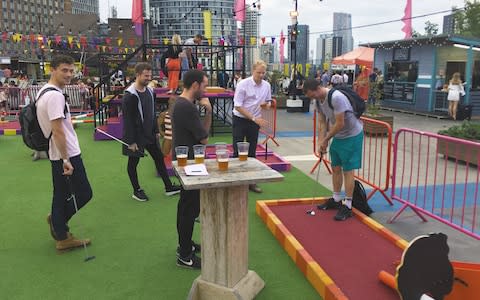London's infantile millennials are nothing new – the city has always been full of grown-up children

I’m on a rooftop in East London with a few friends. On this late summer’s evening we play mini-golf, curl ‘hip hop bowls’ and don a helmet in a batting cage as balls are flung at us. While queuing at a street food stall, we even watch one fully grown man try (and fail) to eat a burger in 60 seconds in a bid to get it for free.
Why are we here? Because, as a group, we are aged between 25 and 30 and this is what London adults do these days. Unable to save money, unwilling to be the first to leave the city and escape the daily grind, our only option is to congregate above a shopping centre, at a place billed as 'The Ultimate Adult Playground', to behave like big children.
There’s a lot of talk about the infantilising of millennials. In London, it’s hard to deny it's a thing when you look at the recent boom of bowling alleys like All Star Lanes, darts clubs like Flight Club, mini-golf emporiums like Swingers, shuffleboard bars and (yes, really) grown-up ball pits. A couple of years ago we published an article in this very paper asking the question: What's behind the infantilising trend for adult 'play'?

But the truth is that this so-called ‘infantlising trend’ in the capital is nothing new. Londoners have been behaving like oversized children since time immemorial.
Rewind 850 years and, in William Fitzstephen’s biography of Thomas Becket published in the 1170s, he describes the behaviour of young Londoners on a summer’s day. He wrote that they “exercised in Leaping, Shooting, Wrestling, Casting of Stones, and Throwing of Javelins fitted with Loops for the Purpose, which they strive to fling before the Mark.”
It is thought that this reference to Casting of Stones refers to a very early variety of lawn bowls. Admittedly, Becket and friends wouldn’t have been listening to A Tribe Called Quest while they played, but what this shows is that Londoners of yore (in particular, upper class ones) weren’t stiffs motivated entirely by serious pursuits. They enjoyed larking about just as much as we do. If anything, leaping and wrestling sounds even more like toddler play than what we get up to in 2018.

Fast-forward a few hundred years and in 1455, lawn bowling lanes in London had become so popular that they were roofed over for the first time, allowing for it to become an all-weather game. Even King Henry VIII was at it. When he moved into Whitehall Palace in 1530 one of the first things he did was order for it to be fitted with bowling lanes, an indoor tennis court, a cockfighting pit and a jousting yard. Throw in some street food vendors, maybe a notch less animal cruelty and this sounds like a great Thursday night out in a Dalston.
Of our group of six at Roof East tonight, half live in the borough of Hackney. Funnily enough, this borough was home to adult grown ups long before the recent wave of gentrification. In the 18th-century the area was home to a middle class elite with a penchant for coffee, beer and a love for tomfoolery - sound familiar?

Indeed, some of the games played in Hackney were quite surreal. One favourite saw horses plunged into Hackney Marshes and forced to doggy-paddle across, to the applause of a frenzied crowd who had placed bets on the race. Another, often played outside the Cat and Shoulder of Mutton tavern on Broadway Market (still open today), was pig swinging. Every week, as pigs were herded to Smithfield market, locals would seize one of the hogs and take turns trying to swing it around their heads. I'm not sure this kind of behaviour would fly with East London’s thriving vegan community, but tossing tofu around your head just isn’t as impressive.

London’s love for tomfoolery is even etched into the city’s map. The name Pall Mall, one of London’s most iconic roads, is derived from an Italian ball game named pallo a maglio(similar to golf or croquet) that used to be played on the street during the 17th century. Up the road, Mayfair is named after a festival that used to be held every spring until the 1730s. The four-day event featured showmen, jugglers and fairground attractions and - would you believe it - eating contests. Although, sensibly, they would race to eat semolina rather than triple-stacked burgers.

Another mark on today’s map of London is Vauxhall Pleasure Gardens. Today the pleasure comes in the form of an all-purpose sports pitch and a children’s playground, but back in the day this was one of the country’s pioneering venues for mass public entertainment. From the mid-17th century to the mid-19th century, Londoners would hop on a boat to cross the Thames (no Vauxhall Bridge back then) to roam these grounds and watch tightrope walkers, hot-air balloon ascents and fanciful firework displays, with food and drink on offer for punters.

So why is it that today’s millennials are returning to the playful spirit of yesteryear? A spokesperson for the Social Fun & Games Club, Gerry Cottle Jnr told me: “I believe Millennials are far more interested in being part of an experience than the previous generation so they're more selective with what they do. Experiences like this are cheaper than the average night out especially when done in big groups, and tap into a social media culture where people want to capture "Instagrammable moments”.
“The world's a stressful place at times and Social Fun and Games Club is all about tapping into our inner playful child.”

We hear a lot about a cultural shift towards the ‘experience economy’ - how millennials would rather spend their money on events and holidays rather than material possessions. It's probably accurate to say there has been a shift between our generation and the one that came before, but look back through the capital’s history and you’ll find that adult’s behaving like children is nothing new.
Adult play is, and will continue to be, a proud part of London’s DNA. So should we feel guilty about behaving like big children? Balls to that.

